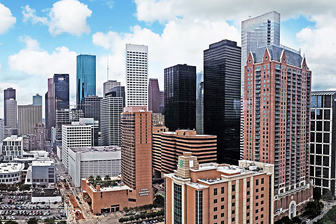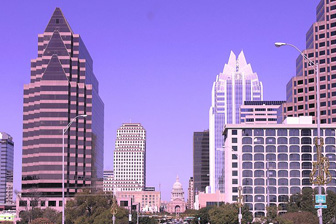| Austin is the capital and heart of Texas. Six Sigma Green Belt training arms Austin students with world class improvement tools. |
|---|
| Price | $2,950 / student assuming min. enrollment is met |
| Duration | 5 days |
| Format | In-person, instructor-led slideshow with exercises ending in a test of comprehension. |
| Materials | Each student will receive a 3-ring binder containing color print-outs of the slideshow. Please note, this material and the presentation itself are copyrighted. A Certificate of Completion is released for each student who passes their test and for which payment for the training clears. |
| Start Day |
Legend:
| | | unavailable |
| |
| | | available |
| |
| | | facility match |
|
| City | Austin, TX |
Recommended Dates
The following dates are recommended because they have a low minimum student requirement,
or students are enrolled but not yet enough to hold a class. Please choose a date for your Six Sigma Green Belt Training class. Dates are formatted as year-month-day:
All Dates
If none of the recommended dates work with your schedule, that's ok. Please choose a date from the list below:
About Six Sigma Green Belt Training
Who is Six Sigma Green Belt Training for?
Any professional determined to improve their organization, salary, and candidacy for promotion should become a Six Sigma Green Belt headed toward Black Belt. All companies whether providing products or services possess opportunity for improvement as do all functions within those companies. Six Sigma is an organizational excellence system applicable to any product, process, or service. This includes production / manufacturing, materials / logistics, purchasing, maintenance, quality, manufacturing engineering, product engineering, sales, marketing, human resources, IT, and finance. Six Sigma exposes upcoming professionals to managerial tasks they may not otherwise have. And, an increasing number of companies require Six Sigma certification for advancement into managerial roles. Austin students will learn: In our course, Austin students learn:
Six Sigma Green Belt Training Course Overview:
Six Sigma Green Belt training conveys a simple, effective improvement system. Designed for all Austin students, techniques require no advanced math. Six Sigma Green Belt training conveys technical and managerial skills prerequisite to Black Belt level. Designed for every level in the company, no heavy statistics or even a computer is needed in our Green Belt course. Steps include Six Sigma's traditional DMAIC cycle borrowing from other tools where needed, and interspersing Lean Manufacturing throughout.
What are Green Belt Level Tools?
Our training covers the full Green Belt body of knowledge led by an experienced Black Belt who will help you every step of the way.
 | | Define. First, opportunities for improvement must be defined, contained, and rallied around. We make sure that we're working on the right problem and stakeholder understanding is aligned with the mission. Since Kaizen, and 8D are available for small to medium sized improvements, Six Sigma is sometimes reserved for major, breakthrough projects such as a company's top 5 financial initiatives. Projects are always done in teams. Managerial tools used include: project management, cost-benefit analysis, team member selection, team formation, change management, project charters, policy generation usually for creating or updating containment-related work instructions, and training. Technical tools include: trend charts, Pareto charts, Y to X Mapping and other scoping techniques, inspection / testing. Key deliverables include quantifying the problem's annual financial impact, and diminishing the customer's suffering immediately.
|
 | | Measure. The team must be certain all decisions that follow are made from trustworthy data. The Green Belt level Measurement System Analysis (MSA) tool for this is Scatter Plot which is reinforced with a fun, hands-on case study exercise. Click the link to see more detail on this topic.
|
 | | Analyze. Causes must be found. Many root cause analysis techniques exist: 5 Why's, cause and effect (fishbone or Iskikawa) diagram, fault tree analysis, Failure Mode and Effects Analysis (FMEA), regression, walking the process, etc. And all of these are covered in our training. But, none prove causality like component swapping and Design of Experiments (DOE). At the Green Belt level, we go up to 3-factor, 2-level full factorial reinforced by continuing our case study.
|
 | | Improve. Causes must be permanently eliminated, which is why you may have heard the phrase, "permanent corrective action". Unfortunately, many folks use this phrase to describe actions with no permanence. Many Corrective Action Request (CAR) and 8D reports contain responses to this question like "retrained the operator" which is usually an insufficient response. The best form of corrective action is error-proofing; some change that literally makes recurrence impossible. Next best would be other physical changes making recurrence extremely unlikely. To help students choose an action, we teach Payoff Matrix, Criteria Matrix, and conduct another cost-benefit analysis to make sure intended actions will reduce total cost. Actions are piloted. If the pilot succeeds, then actions are launched into production.
|
 | | Control. In the Improve Phase, if error proofing was not possible, then actions must be controlled. Many techniques are covered in training but the signature method is Statistical Process Control (SPC). Green Belt Training focuses on the most common type of control chart - Xbar & R taught in a simplified form avoiding the need for Excel or any computer-based assistance. Managerial tools covered include change control, policy writing, training, mentorship, auditing, and supervision.
|







